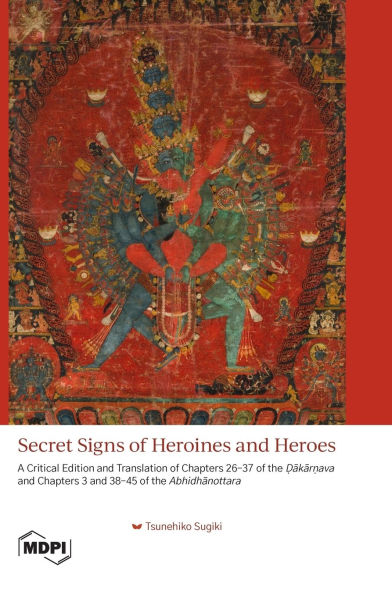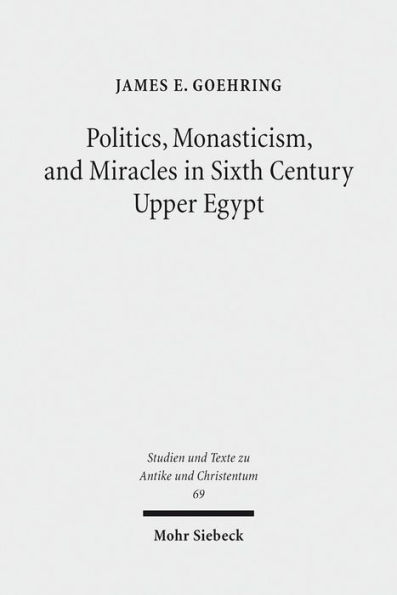Home
Secret Signs of Heroines and Heroes: A Critical Edition and Translation of Chapters 26-37 of the Ḍākārṇava and Chapters 3 and 38-45 of the Abhidhānottara
Barnes and Noble
Loading Inventory...
Secret Signs of Heroines and Heroes: A Critical Edition and Translation of Chapters 26-37 of the Ḍākārṇava and Chapters 3 and 38-45 of the Abhidhānottara in Franklin, TN
Current price: $117.09

Barnes and Noble
Secret Signs of Heroines and Heroes: A Critical Edition and Translation of Chapters 26-37 of the Ḍākārṇava and Chapters 3 and 38-45 of the Abhidhānottara in Franklin, TN
Current price: $117.09
Loading Inventory...
Size: OS
Buddhist tantras in early medieval India and Nepal include many discourses on "secret signs" (chomā, mudrā, and equivalents), which a male practitioner and his female partner, or a male or female practitioner alone, use for various purposes such as communicating with each other to perform tantric practices in a ritual assembly (gaṇacakra, "the circle of the assembly"). The concept of secret signs is one of the key components of tantric culture, also found in Śaiva tantras. This monograph presents a critical edition of the Sanskrit texts of the chapters on secret signs in two Buddhist tantras, Ḍākārṇava ("Ocean of Ḍākas," around the early twelfth century) and Abhidhānottara ("Continuation of the Discourse," around the tenth century), along with their English translation and annotations; it analyzes the discourses of secret signs presented in the Buddhist Saṃvara and other related traditions to elucidate the significance of this teaching in the Ḍākārṇava. It contains examinations of the discourses of various topics, such as the hand and body gestures, code language, classifications and features of yoginīs, hand worship (hastapūjā), inner channels (nāḍī), the rotation (saṃkrānti) of yoginīs, and the yoga of death (utkrāntiyoga). In the Ḍākārṇava, many of these discourses are reorganized to work within the framework of secret signs. In Śaiva and Buddhist tantras, secret signs were originally taught as a means (gestures and code language) for men and women to recognize and communicate with each other. In the Ḍākārṇava, secret signs are not only such a means but have a much broader form and function.
Furthermore, this monograph discusses the method of editing old manuscripts of Buddhist tantras that contain many esoteric expressions and grammatical irregularities. Its appendices explain the structure of all chapters of the Ḍākārṇava, which is essential to understanding their contents.
Furthermore, this monograph discusses the method of editing old manuscripts of Buddhist tantras that contain many esoteric expressions and grammatical irregularities. Its appendices explain the structure of all chapters of the Ḍākārṇava, which is essential to understanding their contents.
Buddhist tantras in early medieval India and Nepal include many discourses on "secret signs" (chomā, mudrā, and equivalents), which a male practitioner and his female partner, or a male or female practitioner alone, use for various purposes such as communicating with each other to perform tantric practices in a ritual assembly (gaṇacakra, "the circle of the assembly"). The concept of secret signs is one of the key components of tantric culture, also found in Śaiva tantras. This monograph presents a critical edition of the Sanskrit texts of the chapters on secret signs in two Buddhist tantras, Ḍākārṇava ("Ocean of Ḍākas," around the early twelfth century) and Abhidhānottara ("Continuation of the Discourse," around the tenth century), along with their English translation and annotations; it analyzes the discourses of secret signs presented in the Buddhist Saṃvara and other related traditions to elucidate the significance of this teaching in the Ḍākārṇava. It contains examinations of the discourses of various topics, such as the hand and body gestures, code language, classifications and features of yoginīs, hand worship (hastapūjā), inner channels (nāḍī), the rotation (saṃkrānti) of yoginīs, and the yoga of death (utkrāntiyoga). In the Ḍākārṇava, many of these discourses are reorganized to work within the framework of secret signs. In Śaiva and Buddhist tantras, secret signs were originally taught as a means (gestures and code language) for men and women to recognize and communicate with each other. In the Ḍākārṇava, secret signs are not only such a means but have a much broader form and function.
Furthermore, this monograph discusses the method of editing old manuscripts of Buddhist tantras that contain many esoteric expressions and grammatical irregularities. Its appendices explain the structure of all chapters of the Ḍākārṇava, which is essential to understanding their contents.
Furthermore, this monograph discusses the method of editing old manuscripts of Buddhist tantras that contain many esoteric expressions and grammatical irregularities. Its appendices explain the structure of all chapters of the Ḍākārṇava, which is essential to understanding their contents.

















